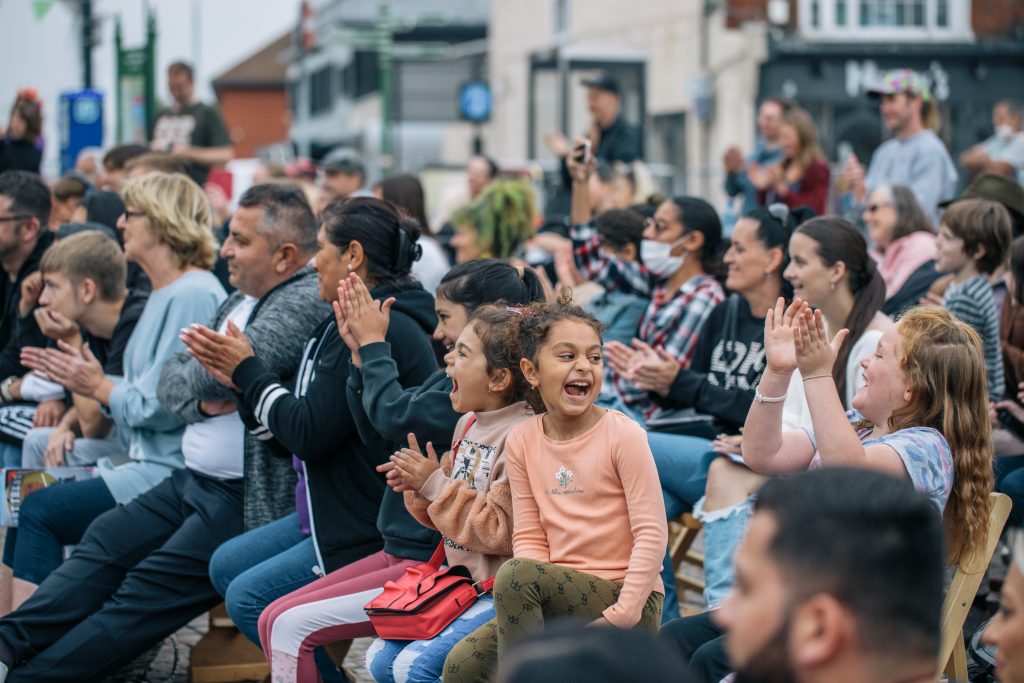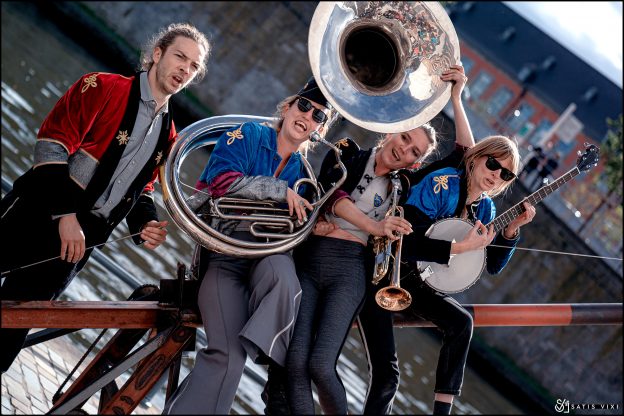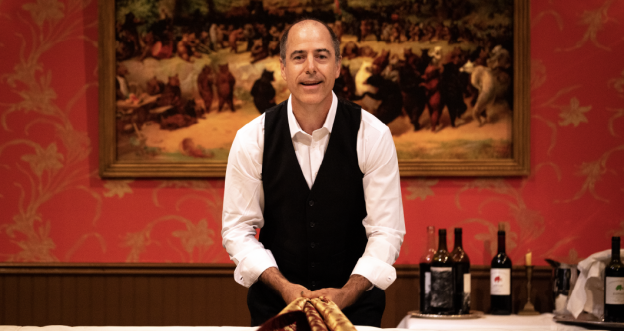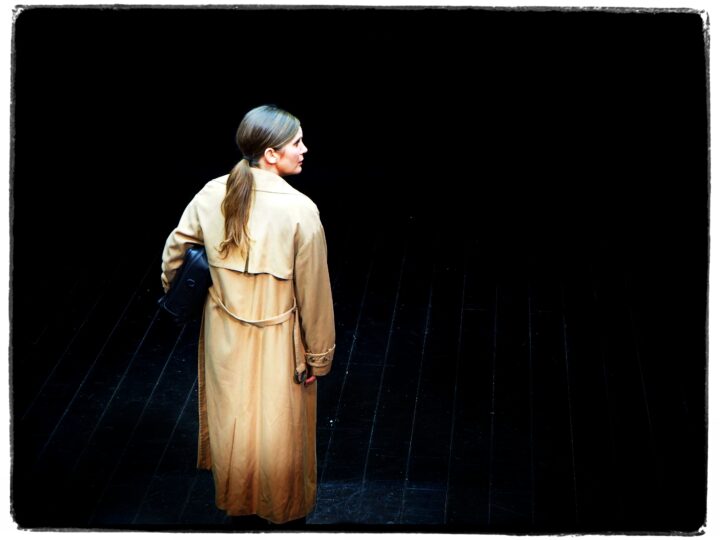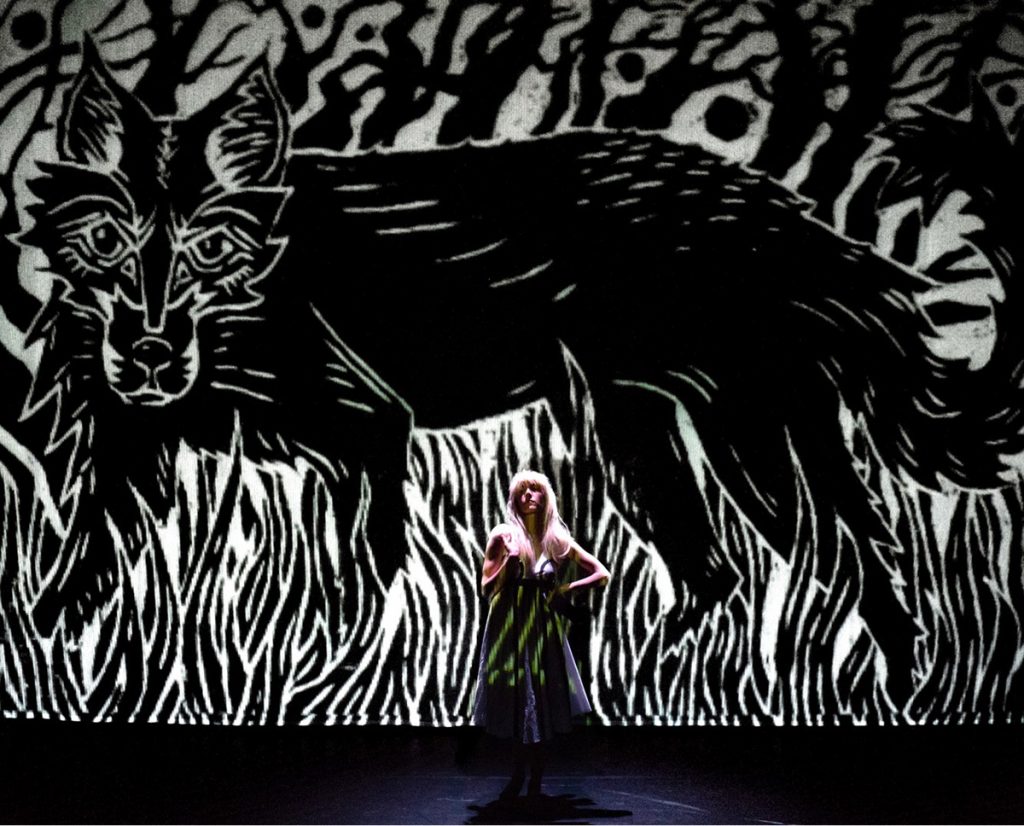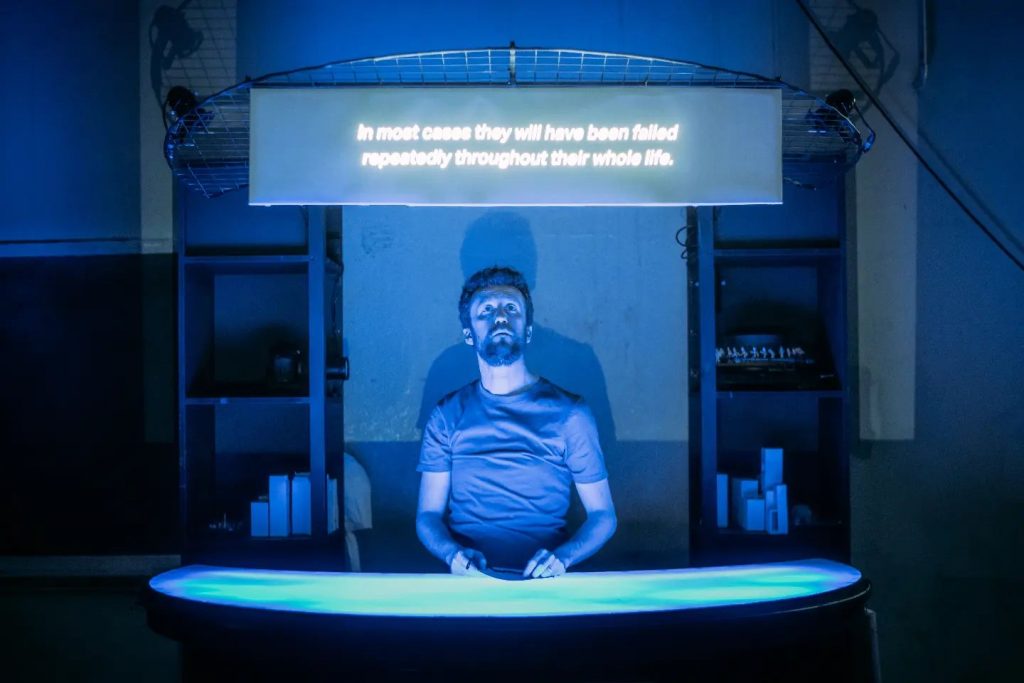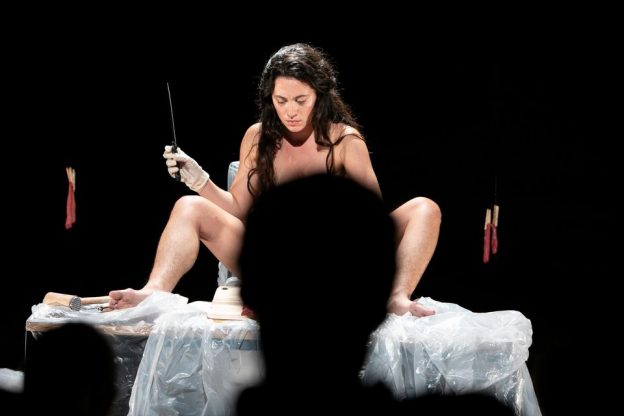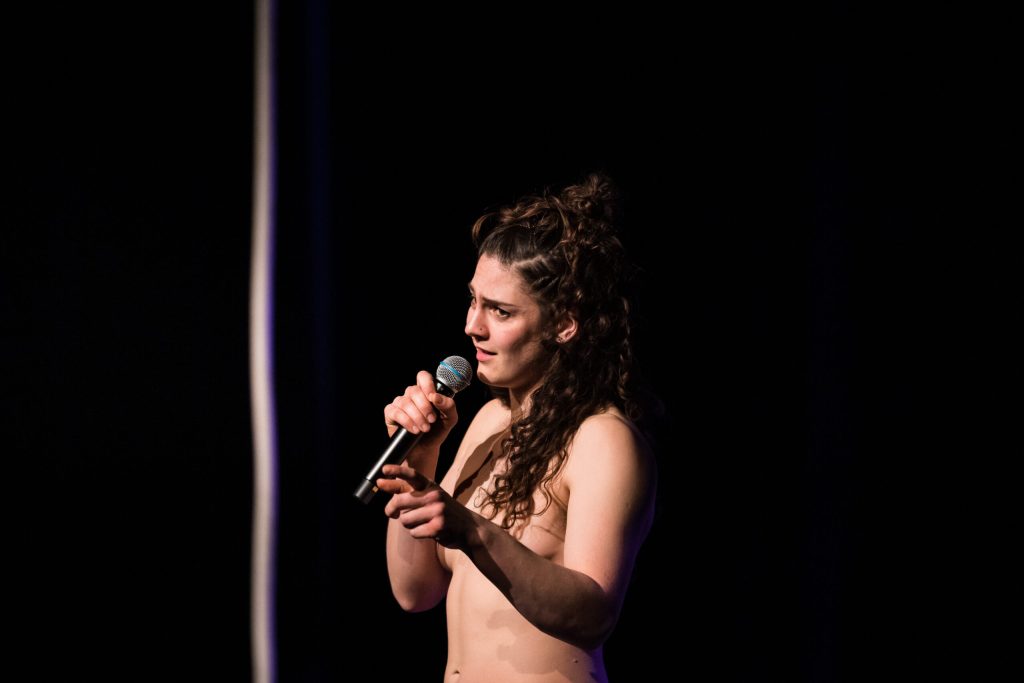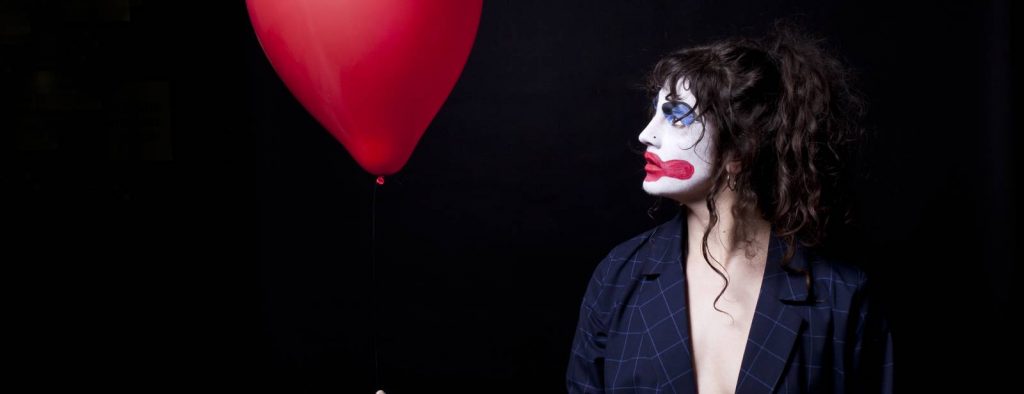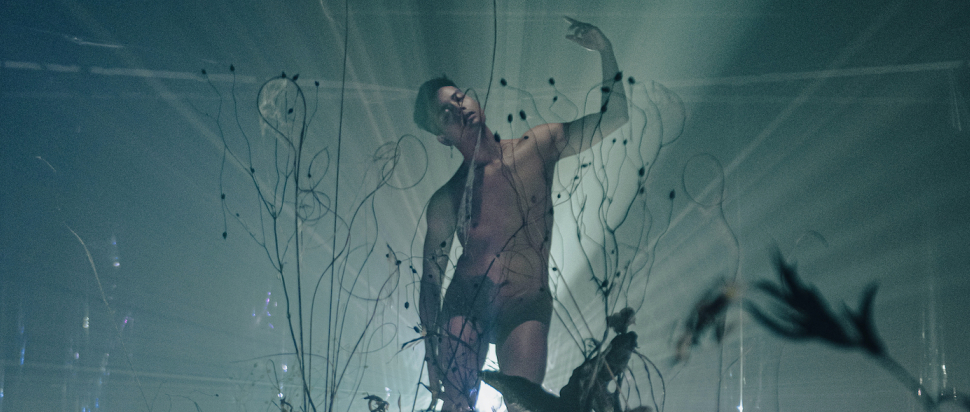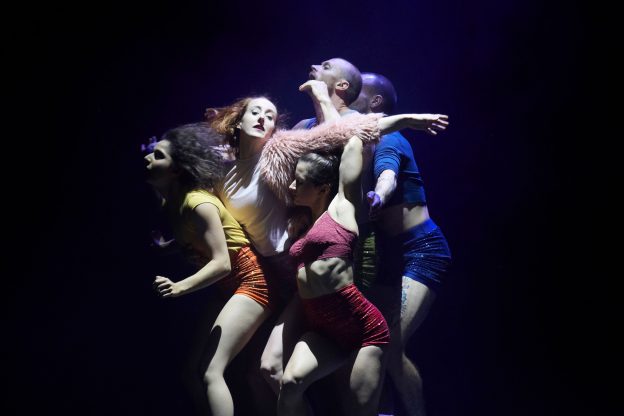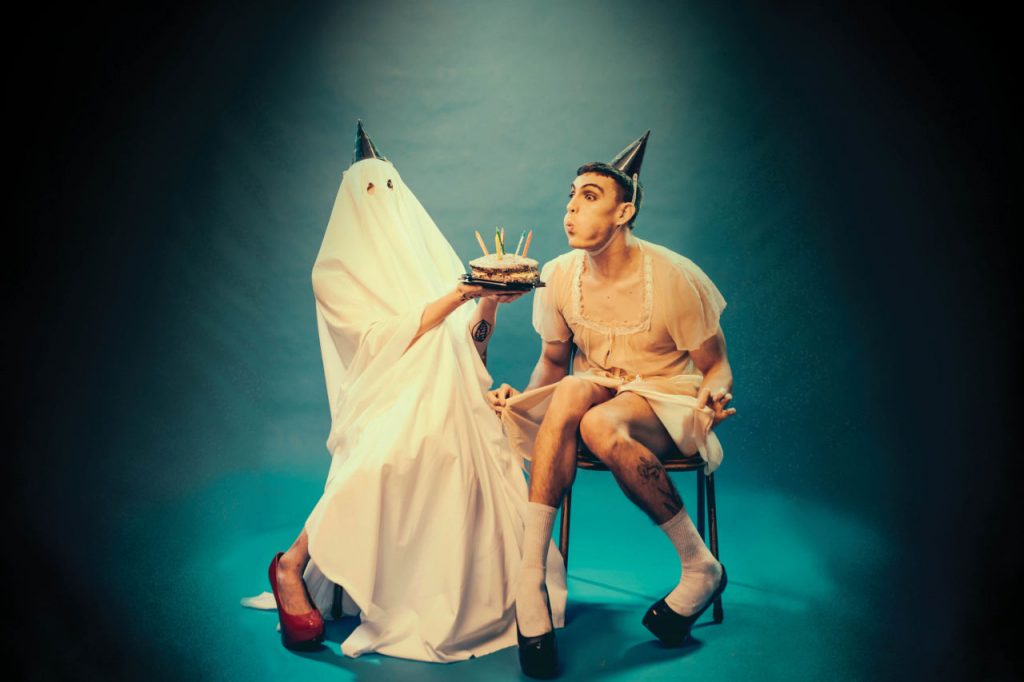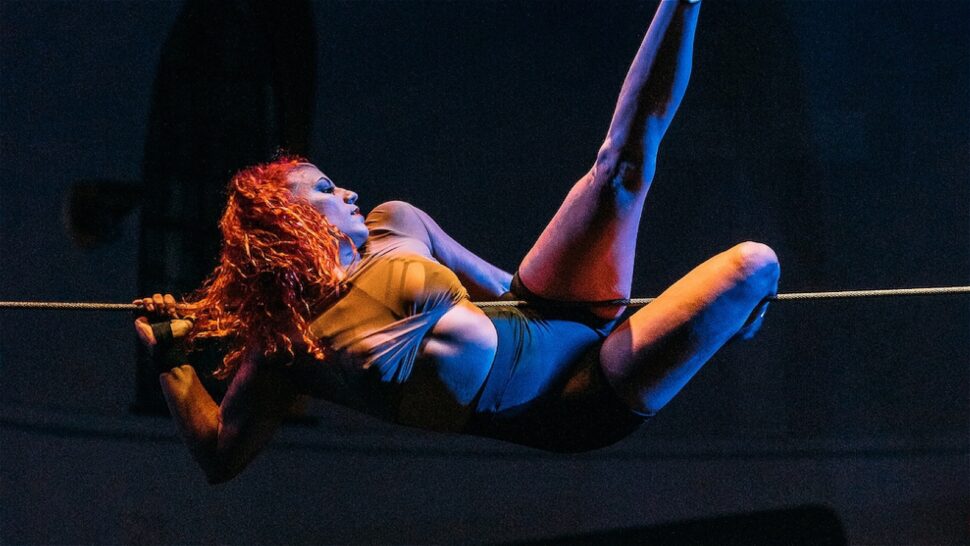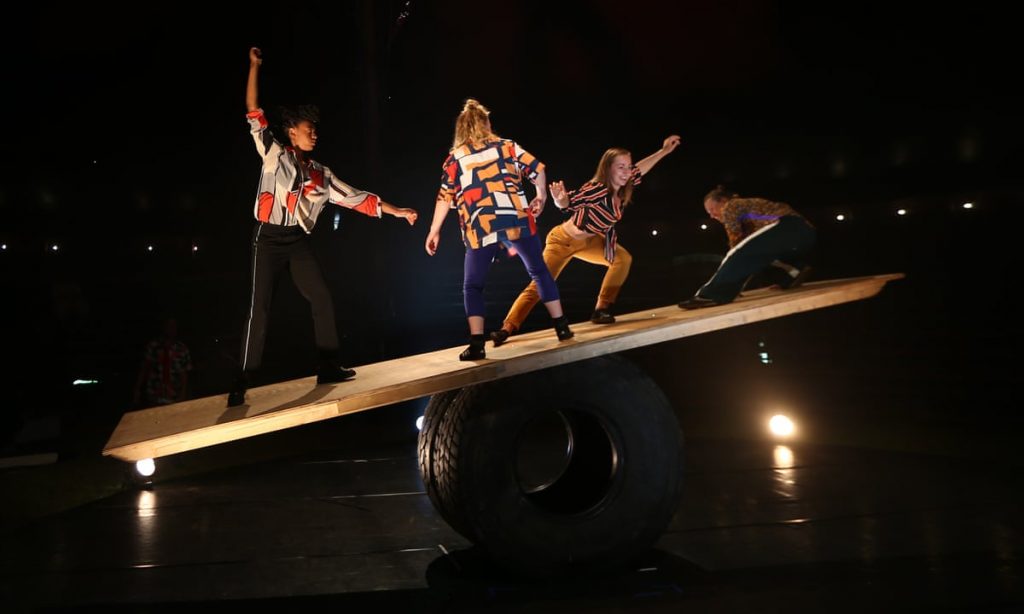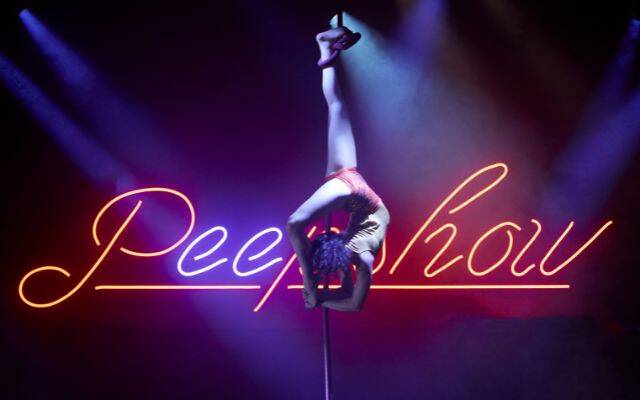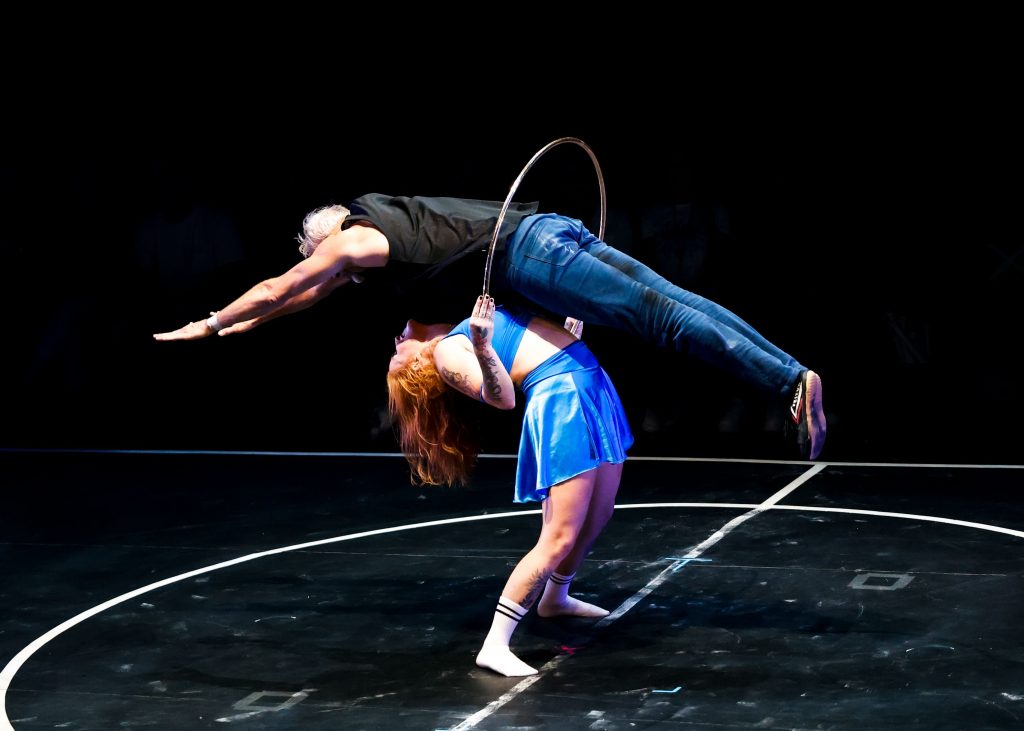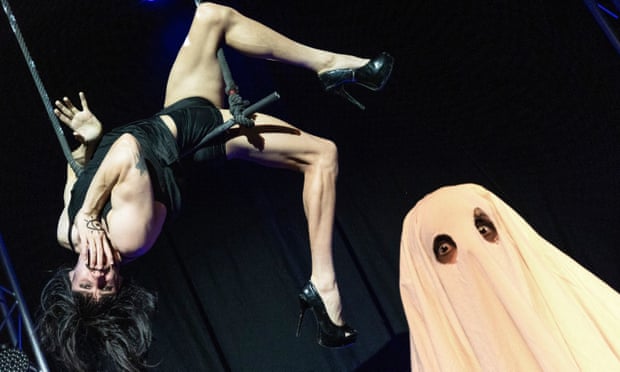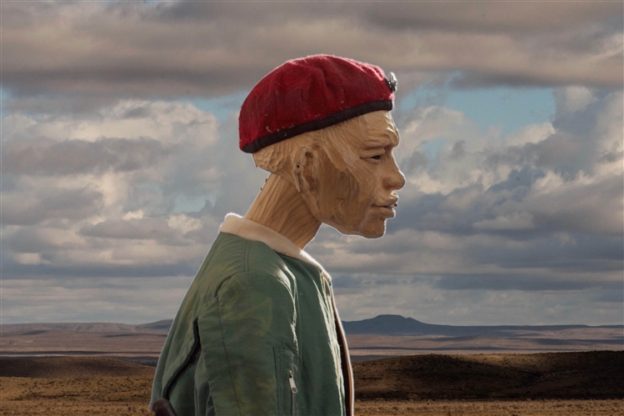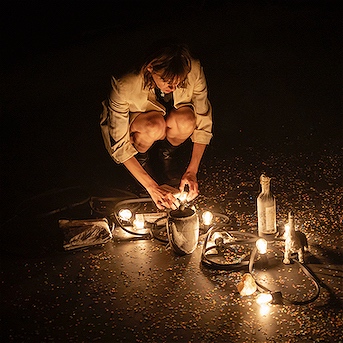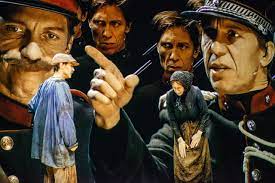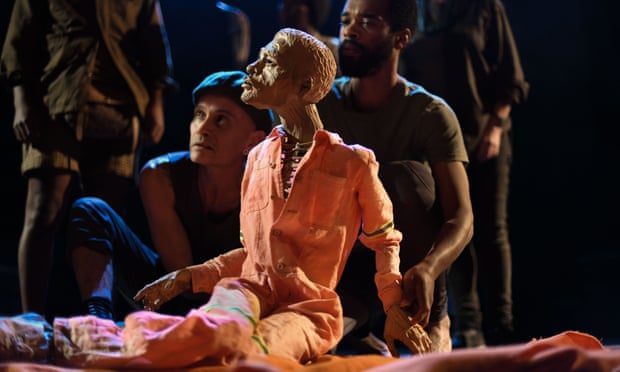… with the Sound of Music! Dorothy Max Prior previews the Out There Festival 2023, which brings a wealth of physical, visual and aural delights to the streets, parks and beaches of Great Yarmouth
It’s almost time for Out There International Festival of Outdoor Arts and Circus, which takes place annually in Great Yarmouth, a small coastal town in the east of England which is fast becoming the UK capital of circus.
2023 is a double anniversary: 15 years of Out There Festival, but also the 25th year of Out There Arts, formerly known as Seachange Arts. Which means it’s a silver jubilee for artistic director Joe Mackintosh, who has been there from the start.
But talking to Joe, it’s clear he’s not resting on his laurels:
‘The main thing is that we are changing all the time,’ he says. ‘A lot of people say it takes 10 years to establish a festival, and that’s about right, but at 15 years, we are still learning…’
And there are changes afoot! This will be the last time that the festival will be held in September, as it is moving to a spring slot from 2024 onwards. More on that anon…
But first let’s take a look at this year’s programme. Out There Festival 2023 boasts 34 artistic companies drawn from 17 countries, featuring 108 performances, with a dozen UK premieres – as well as a wealth of opportunities for the professional sector, the local community, and audience members from near and far to participate.
As has become the tradition at Out There, Friday will be a day for professional networking – with the inclusion this year of young artists from the local sixth form college and schools, who are being drawn into the professional fold.
From Friday evening through to Sunday evening, the streets, parks and seafront of Yarmouth will be ablaze with colour and sound as artists take over public spaces and animate them with physical and visual (and often musical) performance of all sorts.
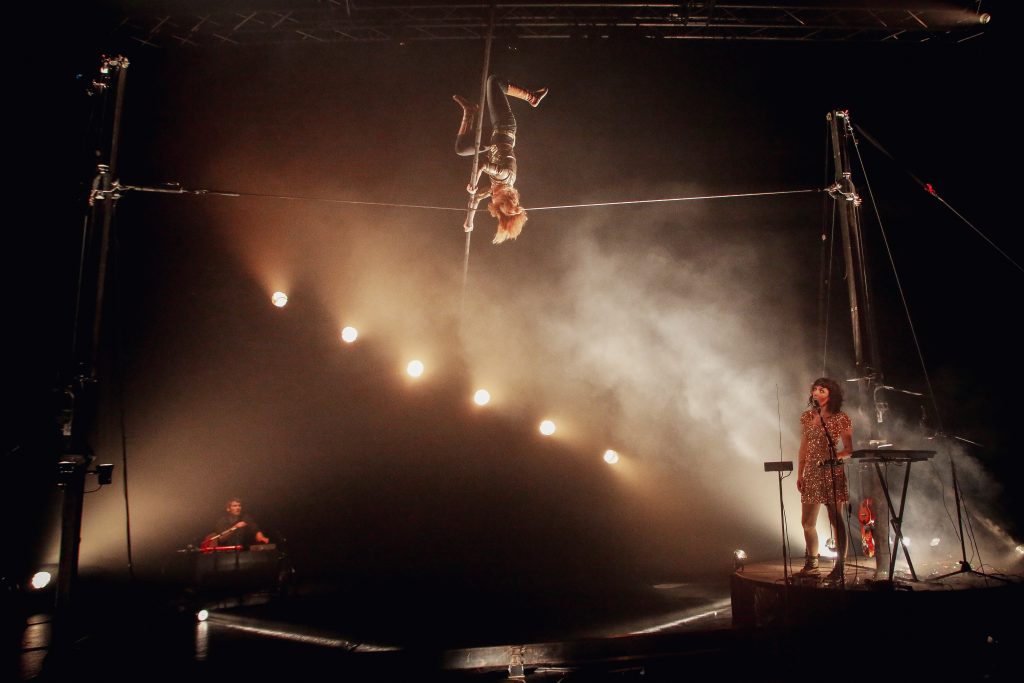
Highlights include what Joe calls ‘the all-female powerhouse’ Les Filles Du Renard Pale who will be presenting Résiste at St Nicholas’ car park: ‘an absolutely unmissable tour de force of tightwire and music’ combining the thrills of French contemporary circus performance and the atmospheric sounds of Bristolian trip hop music. This show, though presented outdoors, is one of a few that will ticketed at this year’s festival.
‘Ticket holders will be able to go onto the site at 6pm, have a beer and watch a number of local bands performing – all of whom are led by young women or non-binary musicians – before the main event’ says the festival’s executive director Veronica Stephens.
Other ticketed shows are indoors, at St George’s Theatre. Opposable Thumb Theatre will be bringing their London International Mime Festival hit Big Boys Don’t Cry [link to TT review] to Yarmouth, posing the question: What makes a man? A serious question explored with a light touch by two very talented clowns. Then, there’s Norfolk poet Luke Wright’s Silver Jubilee, a ‘warm and honest hour of poems and stand-up with the directness and pathos that has made him one of the most popular live poets in England’.
But most shows at Out There Festival will, as ever, be outdoor, free to audience and unticketed.
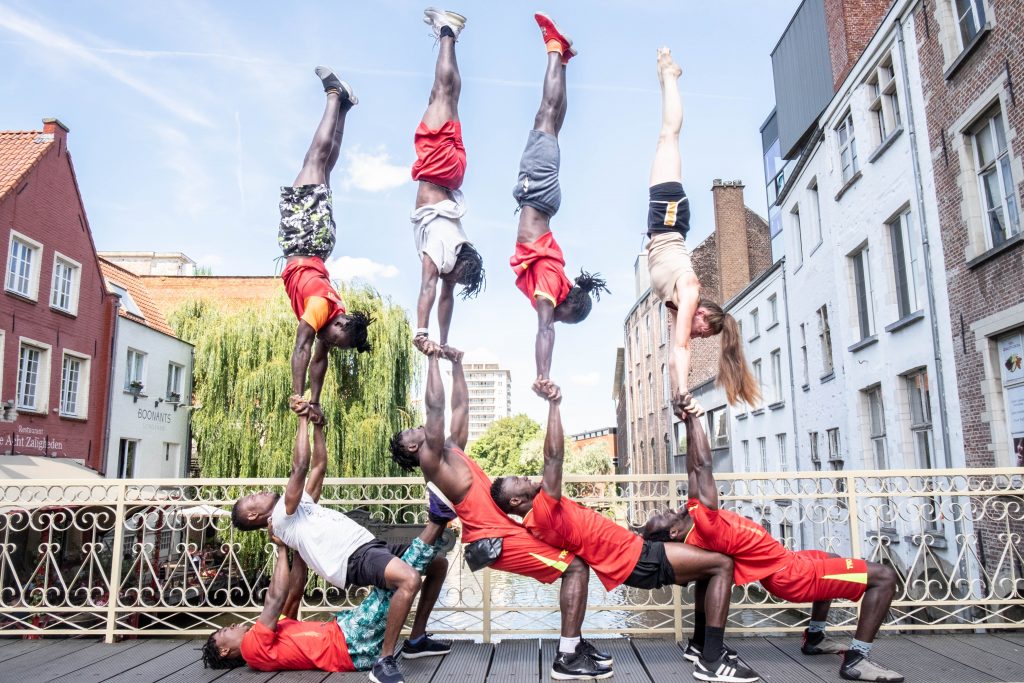
A strand in this year’s festival is a focus on work from Flanders. There are four fabulous Flemish companies – Collectif Malunés, Sur Mesure, Amoukanama and Circus Katoen – in the Spotlight on Flanders programme. All four companies have previously performed at Out There, so this is a new manifestation of an ongoing relationship.
Veronica points out that the shape of the festival is a little different this year: ‘We don’t have a big Saturday night parade, but have instead programmed a lot of shows that can play to large audiences, at different sites.’
She goes on to say that this year, there is a drive to build up different outdoor ‘hubs’ for the festival – so that rather than so much focus being placed on St George’s Park and its multiple stages (which will still be there, though!) there will be other hotspots throughout the town, at Trafalgar Square, St Nicholas Car Park, and Deneside/Blackfriars. These hubs will each have a bar, so people can move between them, or hang out at their favourite site. ‘We want to create a participatory, immersive event’ says Veronica – each hub its own ‘mini environment within the festival’.
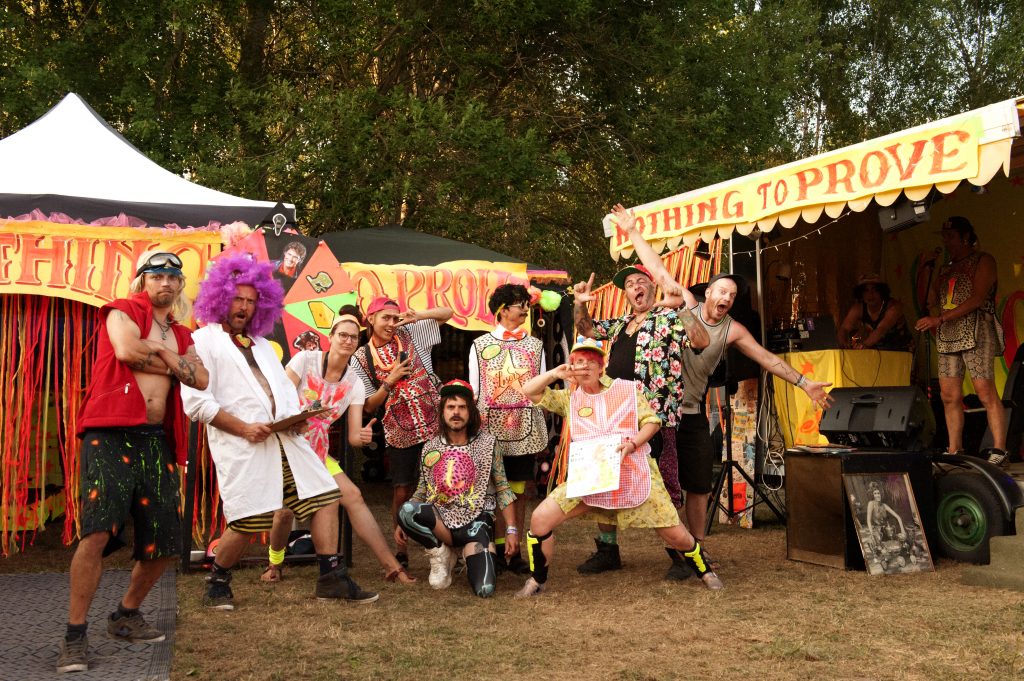
For example, at Trafalgar Square, there will be the Losers Arcade – a giant games emporium with nothing to lose. ‘Leave your ego behind and join
the Losers as you focus on putting the fun back in failure’ says the blurb. ‘Madcap games and challenges at the only arcade were taking part and becoming one of the gang is far more valued than actually doing well.’ This little hub will have an emphasis on local artists, community, and young people – so will also be hosting Broken Spoke for poetry and spoken word, which will be all local poets/artists. The site will also host a circus performance from Duo Vita, who are the local youth troupe Drillaz Circus’ resident circus tutors (all the way from Colombia!); plus a selection of young bands and other emerging talent programmed by Play, Produce, Promote, working with Freshly Greated / Creative People and Places.
Of course, St George’s Park will remain a key site, with the traditional Party in the Park on Friday night, billed as ‘Great Yarmouth’s best outdoor party, with DJ’s, dancing, Lacons festival ale, Gonzos cocktails and street food’.
This will be followed by a whole weekend’s worth of quality shows on a number of park pitches. The Drill House, round the corner from the park, will also be a hub for socialising and participating in festival workshops, as well as hosting the late-night Festival Lounge.
Another element to the festival will be the Sounds Out There strand, with an emphasis on music as an integral part of the outdoor arts and circus sectors – music not just as an accompaniment to physical performance, but music in the foreground – a focus on innovative and unusual music performance in outdoor arts and circus. The programme seeks to inspire emerging musicians and music professionals with talks, behind the scenes access and performances, highlighting how music can be used in ways that reach beyond conventional imaginings.
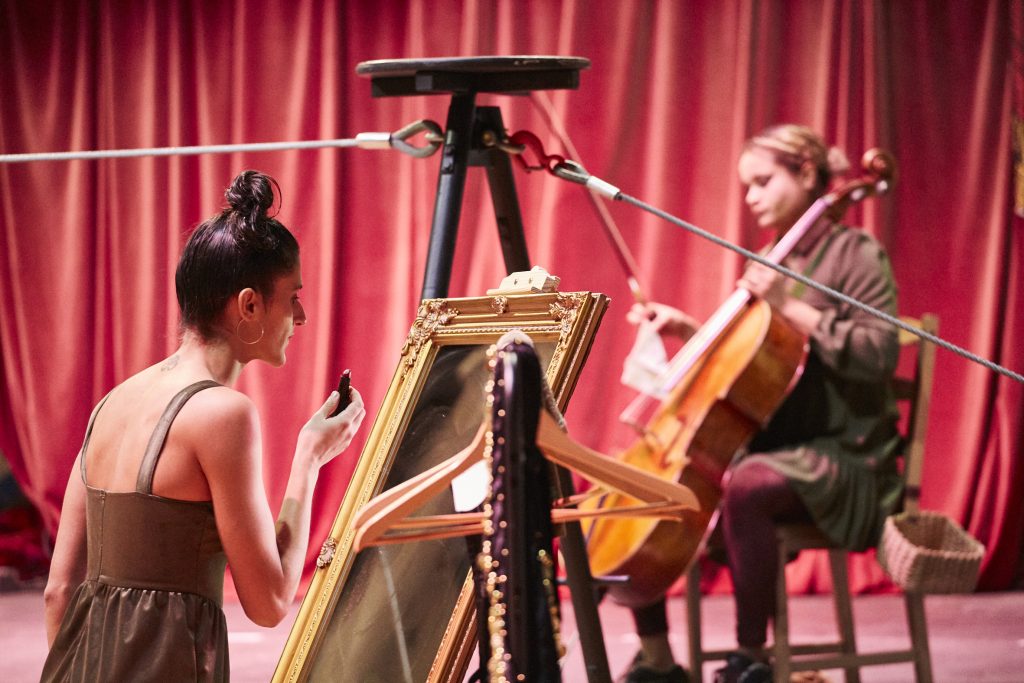
Interesting and innovative combinations of music and circus on offer include Zen Del Sur’s fusion of Flamenco and acrobatics, Orbita, described as a fiery fusion of acrobatic dance, urban dance, flamenco, Cyr Wheel, Boleadoras and acrobalance. A radical combination indeed! Then, there’s Poppy Plowman & Zara Hudson’s Turk(ish) – an autobiographical performance using of live music, contemporary circus and storytelling to discuss personal struggles of identity and Western beauty standards.
’There is an emerging trend of circus artists who are also high level musicians,’ says Joe, citing the ‘jaw-dropping’ one-man band trio Oktopus Orkestar – featuring Karl Stets, a former circus performer now focusing on his music, but retaining a circus sensibility and flexibility.
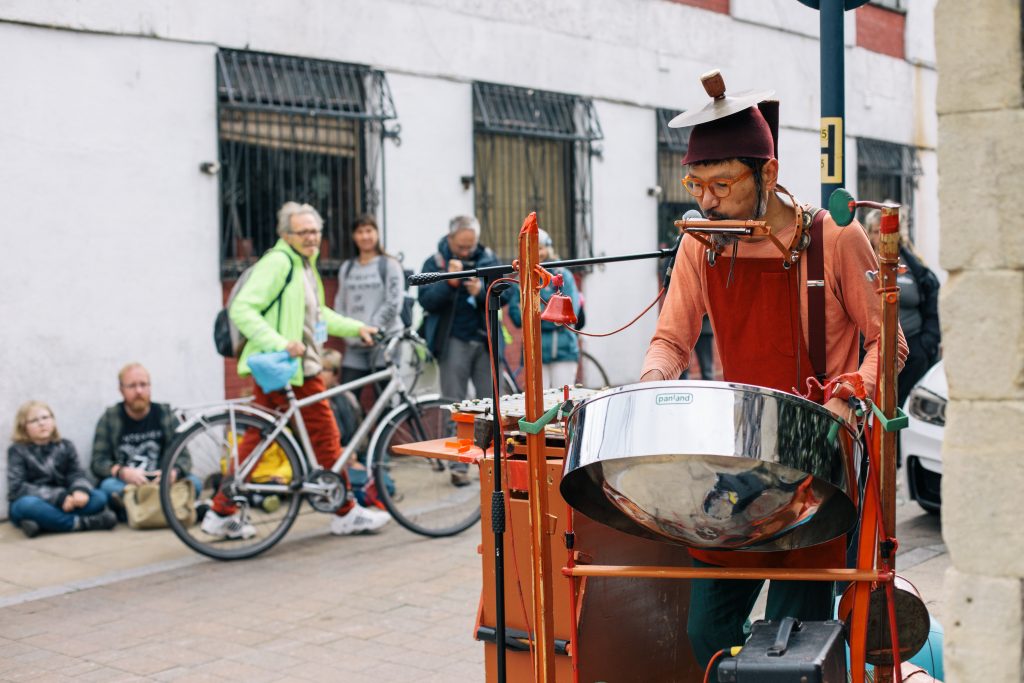
The one-man band acts who will be merged into Oktopus Orkestar – subverting this traditional street busker trope – are the aformentioned Karl Stets, for whom ‘classic melodies and new material are mistreated by a character obsessed with playing everything simultaneously’; the Martin Kasper Orkestra which declares itself to be ‘minimalist and virtuoso all in one’; and Santiago Moreno (from Argentina) who uses a series of pulleys and strings along with his guitar, utilising the principles of puppetry and the complexity of Latin American rhythms.
Then, there’s Ichi from Nagoya in Japan, a star of Out There Festival 2022, who takes the notion of a one-man band to new limits, using quirky handmade instrument inventions such as his stilt-bass, Kalilaphone, balloon-pipes, and tapumpet. Ping-pong balls, typewriter, toys and everyday objects will also make an appearance.
Two companies that have received developmental support from Out There Arts, via residencies at the Drill House arts centre, are bringing work to the festival. Hicks and Rudkin will present a world premiere of Tony & Ray Find Their Feet, in which two mature workmen steal the moment to indulge their passion in eccentric dance. And CocoLoco’s Shangri-LaLa promises the delights of heaven on earth, exploring famous utopian ideas from Avalon to Xanadu – this also a world premiere.
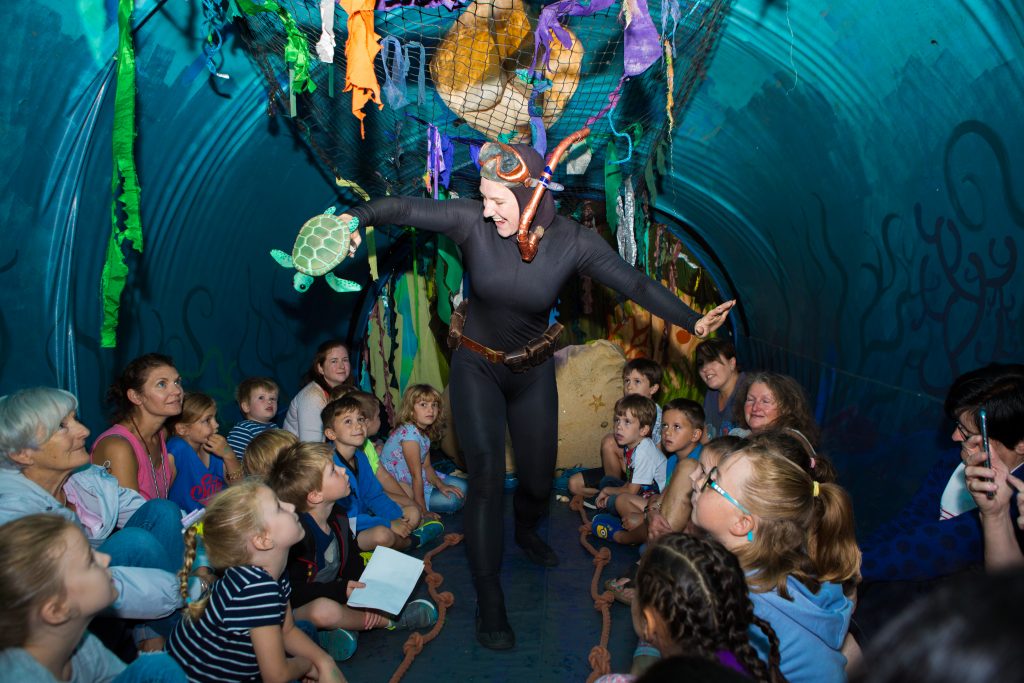
Elsewhere in the line-up, Paka the Uncredible will be Out and About with a Whinny, as Rusty the mechanical horse slips his tether and is off on a solo adventure; and Circo Rum Ba Ba’s The Whale will offer people the opportunity to squeeze into the belly of an enormous inflatable Sperm Whale where they will find a bubbling, kelp-swirling ocean. Exquisite puppets, comedy and music abound in this tale of sea creatures and their battle to survive. Puppetry of a completely different sort can be found in Professor Patel’s Bollywood Punjeet & Judygee Show, an imaginative modern day twist on the traditional Punch and Judy show, presented by Jack in a Box Entertainment.
As ever, participation as well as spectating will be a key element of the festival. This has never been an ‘add on’ for Out There Arts, but always integral to the organisation’s work.
This year, Duckie’s The Posh Club at the Drill House will, on the 9th of September, open a week of pre-festival community engagement. The Posh Club is a participatory dance and cabaret event aimed at the over 60s – although they can bring along their younger companions!
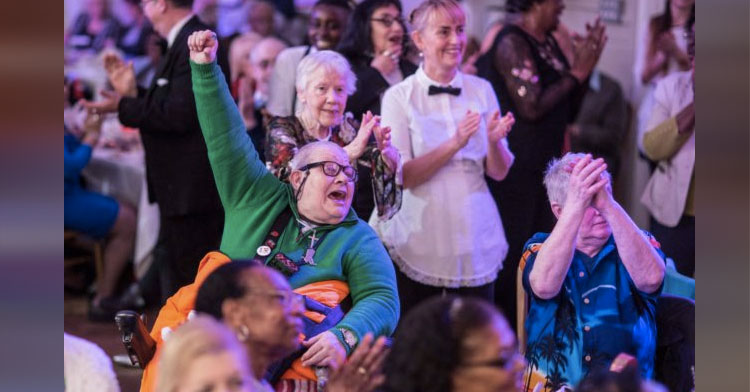
From the 11th till the 15th, East Norfolk Sixth Form College will be a hub of activity, with students from schools and colleges across Great Yarmouth coming along to participate in workshops led by musicians and circus artists who are performing in the festival. On Thursday 14th, Out There will facilitate a Careers Day for young aspiring musicians – with an emphasis on ‘thinking outside the box’ exploring the potential working with outdoor arts.
‘The college is very supportive and have excellent links with schools in the borough,’ says Veronica, ‘It’s a good, positive relationship’. One that they will bring forward into future festivals.
This increased engagement with schools and colleges is one of the main reasons that the festival will, from 2024 onwards, be in spring half-term week (end of May/ beginning of June) rather than September.
‘At the moment we do engagement work in June and July and then there’s a six-week summer holiday,’ says Veronica. ‘If it’s earlier in the year, it can be embedded in as part of the curriculum.’
‘That half term week will mean that there will be potential for more days –to spread out a little,’ adds Joe. ‘Out There is now the biggest Outdoor Arts weekend festival in the UK and trying to see all the work in two days is tricky.’
Joe also says that another reason for the move is that the organisation has, for the past couple of years, run a second festival, Fire on the Water, in late October.
‘Fire on the Water last year sold 29,000 tickets in 6 days – in the off-season in Yarmouth!’ says Joe.
So that’s two massive festivals for the organisation to run close together…
‘Piggy-backing events – producing Out There Festival in September and Fire on the Water in October-November is challenging for the team!’ says Joe. ‘Moving Out There to the spring allows us some breathing space and planning time’.
‘September has worked for us, but it’s time to try something else…’ he adds ‘but it is the end of an era…’
Yes, the end of an era – but no doubt the start of a fabulous new one!
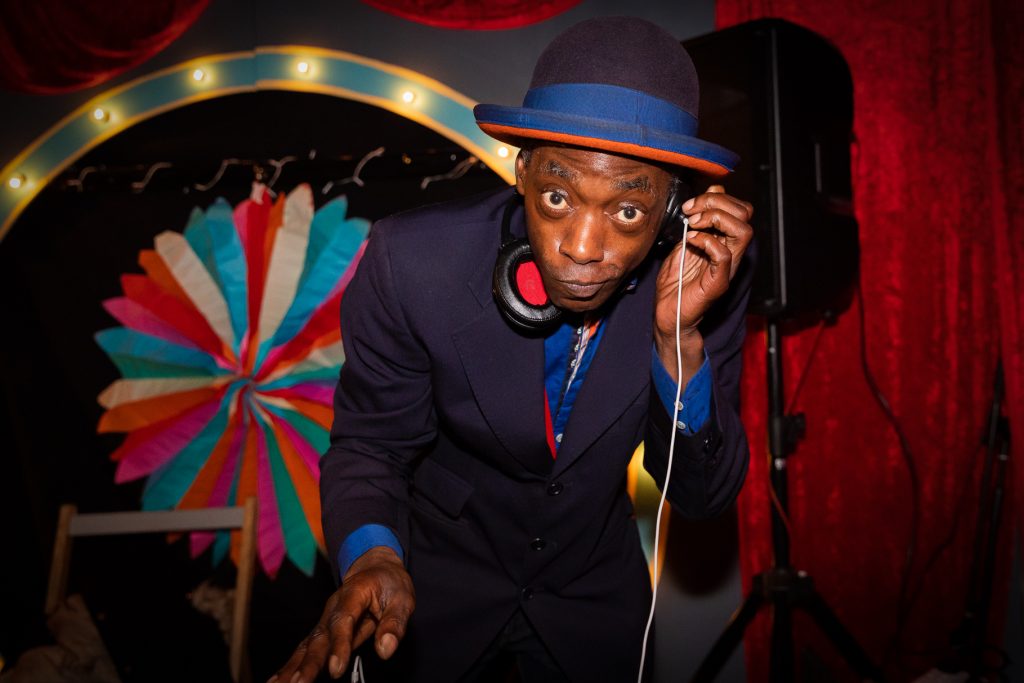
Out There Festival, now celebrating its 15th edition, has built a national and international reputation for world class artistic quality, new and diverse work, regional artistic talent, international collaboration and innovative community engagement.
Perched on the east coast, closer to the continent than the capital, Out There has established an international reputation for its exceptional, innovative and diverse programme, regularly attracting more than 60,000 people to Great Yarmouth each year.
Out There Festival runs 15–17 September 2023, and is preceded by a week of community-engaged activity, starting with Duckiie’s The Posh Club at Drill House on the 9th of September.
Featured image (top of page): Sur Mesure: Barriere, appearing as part of the Spotlight on Flanders programme at Out There Festival 2023.
Spotlight on Flanders is a project of Circuscentrum, funded by VLAIO (Brexit Adjustment Reserve) with the aim to invest in long-term cooperation between Flanders and the UK in the circus field. The project puts Flemish circus creations in the spotlight and brings together Flemish and UK circus professionals to facilitate exchange.
For full details of the programme, including all free and ticketed events, see https://outtherearts.org.uk/
Box office link for ticketed shows: https://outtherearts.ticketsolve.com/ticketbooth/shows
